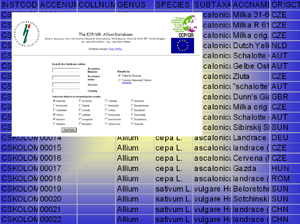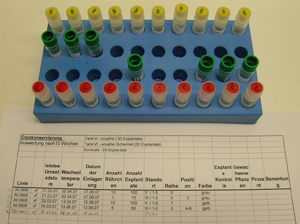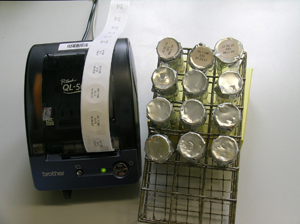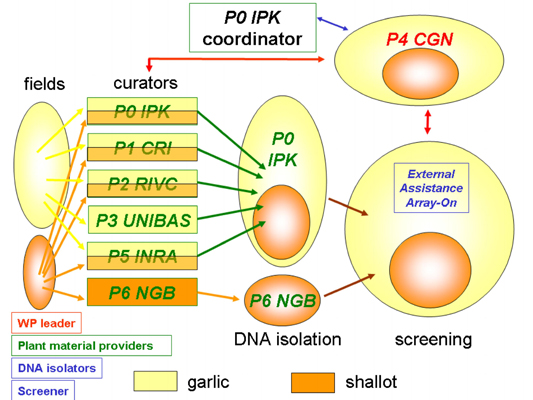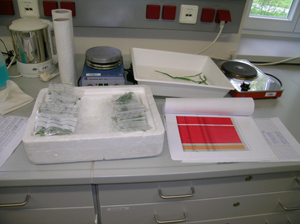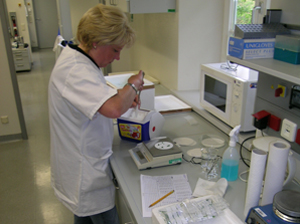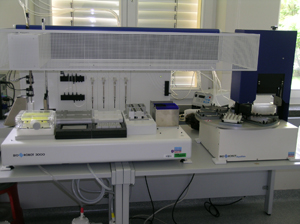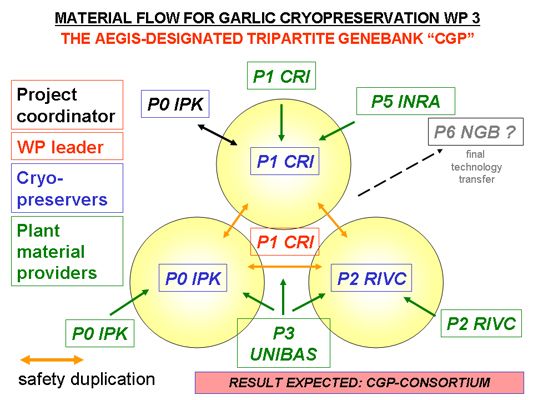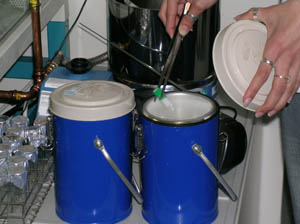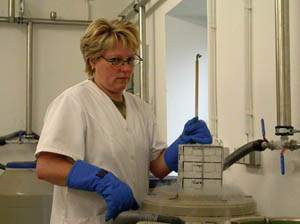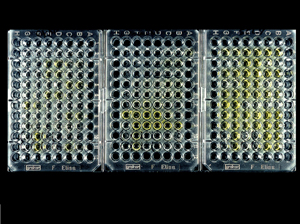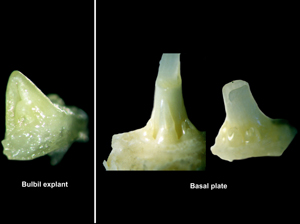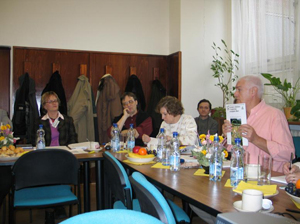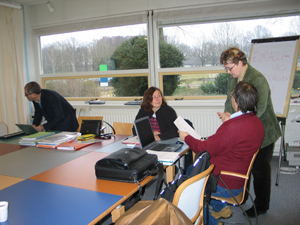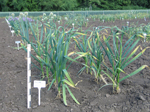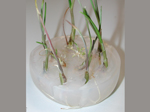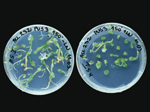Projects |
||||||||||||||||||||||
|
|
||||||||||||||||||||||
Actions and means involvedBecause of increasing awareness that vegetatively maintained germplasm is the most expensive part of plant genetic resources, a consortium of seven European partners comprising main collection holders of vegetatively propagated alliums, virus and molecular marker experts was established to use high-tech methods for rationalization and increase of storage safety and health conditions. Five work packages were developed: Documentation, Molecular screening, Cryopreservation, Virus elimination and Coordination.
Most important is the universal use of one molecular marker system for all
accessions to ensure comparability in screening for duplicates in genetic
patterns, which requires service of one laboratory to all countries. A
half-centralized approach for germplasm storage in liquid nitrogen will
be adopted joining laboratories of three countries, which allows connecting
the advantages of economically favourable centralization and needed local
safety splitting. Virus elimination increases germplasm quality facilitating
its free exchange. This major investment in EU vegetative Allium genetic resources
will result in upgrading the European Allium Database and considerable improvement
of storage safety and health conditions of material.
WP 1 Documentation
The project is designated to be an integrated part of the European germplasm maintenance strategy.
Therefore, the connections with the surrounding data management are maintained by close connection
with the
European Allium Database EADB managed by Dave Astley, HRI Wellesbourne, UK. It is the first source
for the duplicate screening, and it will then be the last target of the condensed information developed within the
project.
WP 2 Molecular duplicate screening
Undesired duplication (redundancy) is one of the main surplus cost factors in genebank management. As has been found in the past, morphological characters and passport data are not sufficient to find undesired duplication. Therefore, it was intended to use molecular markers, which should give a considerable contribution. Molecular markers are well-developed in Allium, especially for garlic. The attempt was made to use external assistance by a laboratory which, unfortunately, did not reach this goal. A novel technology was applied on the basis of SNP markers using micro-array technology. Since the failure was not caused by the technique itself, SNP analyses are still seen as the main way to find undesired duplicates, In course of the action, the collection curators sent freeze-dried leaf samples, from which DNA was extracted in the laboratory of IPK (P0). Only P6 (NordGen) performed the DNA extraction in the own institution. DNA was then forwarded to the analysis laboratory. CGN (P4) was the final station, which analysed the work. Since we did not come to a finalization of this task, a limited AFLP survey was done on the EURALLIVEG garlic and shallot core collections in IPK (P0). As a result of this, first impressions on the infraspecific structure of the preserved genepools were obtained.
WP 3 Cryopreservation
Cryopreservation is the main workpackage with respect to the manpower employed. This takes 65 % of the project. This is caused by the high labour input required to introduce the material into cryopreservation. The economical effect of cryopreservation is, however, realized by the very low cost of the maintenance once the material is stored in liquid nitrogen. The source organs for cryopreservation depend of the type of the material (bolting or non-bolting) and the season, because several organs are only available in some seasons. Bulbils are formed in summer. Then there is a dormant period, the main usability is from December until April. In non-bolting material, only the basal plate is usable, which is in the cloves from autumn to winter or in the compound bulb in spring. This source is also available in bolting garlic. Both types can be used in form of in vitro cultures, which is the normal donor material when it is in virus-free condition. In vitro cultures are best usable after cold preculture. The basic method for cryopreservation envisaged here is vitrification. The principle consists in transferring small explants from shoot tips after dehydrating pretreatments into standardized cryoprotective solutions, which allow the tissue water to undergo glass transition during fast drop down of the temperature. The basic process characterized above was conducted in the three cryopreservation units of P0, P1, and P2. They exchanged then their safety duplicates under coordination of P1. All measures were technically adjusted in agreements and were subject to regular auditing procedures, which became standard in the present laboratory practice. The safety-duplicated cryo-collection hosted in the genebanks of three countries is legally fixed by a Consignment Agreement between the three partner institutions.
WP 4 Virus elimination
Virus diseases can cause dramatic yield losses in the crops. This danger
is especially important in vegetatively propagated germplasm, because the major part of the viruses does not
pass the seed stage of a normal generation plant cycle, which is, however, absent here.
Of the five major viruses present in garlic, OYDV (onion yellow dwarf virus), SLV (shallot latent virus),
LYSV (leek yellow stripe virus), GCLV (garlic common latent virus) and the Allexi-Virus group (previously know
as mite-borne filamentous viruses), OYDV and LYSV are the most harmful virus species. Virus tests were performed by
ELISA technique. A further field performance test will be implemented later by UNIBAS (P3)
to document the impact of virus elimination on the health and yield components. Conclusions will be drawn later about
the further phytosanitary policy within garlic germplasm management and, beyond of the garlic germplasm, also to shallot and
other alliums.
WP 5 Coordination
The coordinator (P0) was responsible for the overall management of the action. He was assisted by three WP leaders
who managed the various WPs and reported to him. Decisions were made during the annual project meetings
with all partners present and based on majority vote. Major activities were supervision and writing of the
annual progress reports, financial management of the project, organization of the annual project meetings by
the local partners in close collaboration with the coordinator, contacts with the office at Brussels and the
management of the project website. The further maintenance of the EURALLIVEG collection and the activities based
on this project will be supported by the chairmanship of the EURALLIVEG coordinator in the ECPGR Allium Working Group.
|
||||||||||||||||||||||
EURALLIVEG - Projects |
|
|
|
|
|
|
